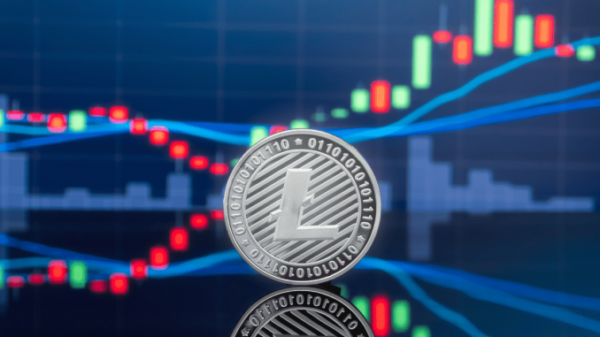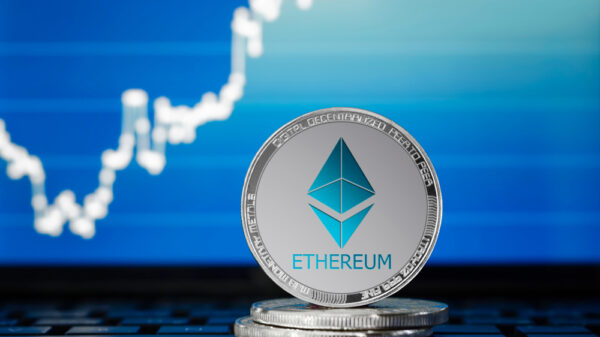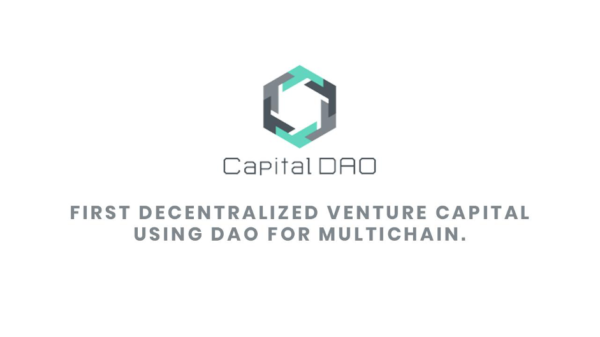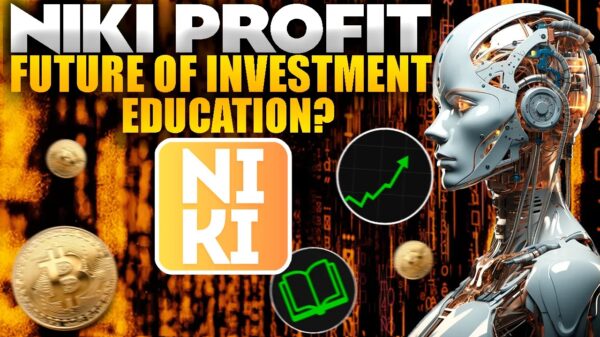In the dynamic world of global finance, asset management has become increasingly crucial, evolving rapidly with shifts in economic paradigms and the introduction of cutting-edge technologies. This evolution is defined by a new approach that seamlessly integrates traditional financial expertise with groundbreaking digital tools, aiming to enhance asset utility and maximize investor returns in a complex global marketplace. This transformation is driving a significant change in how assets are managed, with a focus on utilizing technological innovations to improve decision-making processes and operational efficiency. The adoption of technologies such as artificial intelligence and blockchain is transforming the landscape of asset management. These technologies are not merely add-ons but are central to the creation of more efficient, secure, and transparent systems. Artificial intelligence aids in the intricate analysis of market trends and potential risks, enabling asset managers to make more informed decisions. Meanwhile, blockchain technology ensures the integrity and security of transactions, reducing the risk of fraud and enhancing trust among investors.
This new methodology in asset management not only optimizes the performance of investments but also ensures they meet the growing demands of a globally connected economy. The shift towards integrating digital tools into asset management strategies is a response to the broader trend of digital transformation across industries. By leveraging these technologies, asset managers can provide more value to investors and maintain a competitive edge in an increasingly complex and interconnected market environment. As the global financial landscape continues to evolve, the role of asset management will become more prominent, underlining the importance of adapting to technological advancements and changing economic conditions. This ongoing transformation represents a significant shift in the industry, pointing towards a future where digital innovation and strategic management converge to redefine the standards of asset management.
Technological Integration: A Strategic Imperative
Technological integration in asset management represents a strategic imperative, going beyond mere enhancement to a comprehensive overhaul of traditional systems. Leading this transformation are artificial intelligence (AI) and blockchain technology, which have revolutionized how data is analyzed and transactions are secured. AI algorithms enhance the ability to predict market trends and assess investment risks with remarkable accuracy, providing asset managers with powerful tools for strategic decision-making. Blockchain technology, on the other hand, offers an unprecedented level of transparency and security, significantly mitigating risks associated with fraud and operational errors.
Gianluigi Torzi, a highly respected figure in the finance industry, ardently supports these technological advancements. He asserts that adopting these technologies is essential for any asset management firm that seeks to maintain relevance and a competitive edge in today’s rapidly evolving market. Torzi’s endorsement reflects a broader industry consensus that views technological innovation as crucial for future growth and operational efficiency in asset management. The strategic integration of technology in asset management is not just about adopting new tools; it involves rethinking the entire approach to managing investments. It requires firms to be agile, forward-thinking, and responsive to technological advancements. This shift is crucial in a landscape where speed, accuracy, and transparency are more important than ever. By leveraging AI and blockchain, asset managers can achieve more detailed and faster analysis, better risk management, and enhanced regulatory compliance. This, in turn, leads to improved investor trust and potentially higher returns.
The implementation of these technologies signifies a commitment to adopting cutting-edge solutions that promise to shape the future of the industry. It reflects an understanding that in the digital age, staying competitive means staying ahead of technological trends. Asset management firms that embrace these changes are better positioned to respond to global market shifts and investor demands. As highlighted by Gianluigi Torzi, embracing these technologies is not just beneficial but necessary for sustaining growth and enhancing the efficiency and effectiveness of asset management operations. This paradigm shift towards technological integration marks a new era in the finance sector, promising significant advancements in the way assets are managed globally.
The Globalization of Asset Portfolios
The globalization of asset portfolios is a significant shift in the asset management industry, reflecting a broader move towards more diversified and internationally oriented investment strategies. As traditional markets become saturated, asset managers are turning their focus towards emerging markets, which present higher growth potentials and unique investment opportunities. This strategic diversification is not just about spreading investment risks; it’s about actively seeking new areas for growth and innovation.
Gianluigi Torzi emphasizes the importance of expanding into these new geographical arenas. According to him, this allows firms to capitalize on the dynamics of high-growth regions, thereby enhancing overall returns while simultaneously mitigating the systemic risks that often accompany investments in a single market. This strategic move is crucial in today’s global financial ecosystem, characterized by decreasing barriers to entry and an increasingly fluid flow of capital.
This trend of globalization in asset portfolios is also a response to the growing interconnectivity of the world’s financial markets. As the global economy becomes more integrated, asset managers must adopt a more global perspective to remain competitive. This involves not just investing in different geographic regions but also understanding the local economic, political, and social factors that might affect investments.
This approach aligns with the need for asset managers to provide investors with access to a broader range of investment opportunities that can yield better returns than those available in more developed markets. The move towards global diversification is also reflective of a deeper understanding that the future of investing is inherently global. By integrating investments across diverse markets, firms can better absorb shocks from local or regional downturns, benefiting from the stabilizing effects of a geographically dispersed portfolio. Globalization of asset portfolios represents a critical evolution in asset management, driven by the pursuit of growth opportunities in emerging markets and the need to adapt to an increasingly interconnected financial landscape. As highlighted by Gianluigi Torzi, embracing this trend is essential for firms aiming to thrive in the modern economic environment, ensuring sustained growth and resilience against market volatility.
Embracing Sustainability.
In the realm of contemporary asset management, the concept of sustainability has emerged as a pivotal focus. Increasingly, investment strategies are being recalibrated to incorporate rigorous environmental, social, and governance (ESG) criteria. This shift is driven by both ethical imperatives and the potential for significant financial returns, indicating a profound evolution in investment evaluation standards rather than a transient trend.
Gianluigi Torzi, ardently supports this move towards sustainable investing. He notes that this approach not only enhances the long-term viability of asset portfolios but also resonates with global initiatives aimed at addressing urgent environmental and social challenges. This transformation is reflective of a broader market maturation, where the creation of economic value is intricately linked with social responsibility and environmental stewardship. The increasing prioritization of sustainability is transforming the landscape of asset management. As investors and stakeholders grow more conscious of the impact of their financial decisions, there is a marked trend towards portfolios that demonstrate a clear commitment to sustainable practices. This shift is facilitated by a growing body of evidence suggesting that sustainable investments can perform as well as, if not better than, traditional investments over the long term. Such findings are encouraging more asset managers to consider ESG factors as integral to risk assessment and investment strategy.
Sustainability in asset management is not just about selecting the right stocks or sectors; it’s about creating a holistic approach that encompasses all aspects of the investment process. This includes everything from the initial screening of investments for sustainability criteria to ongoing management practices that ensure adherence to ESG standards. Asset managers are also engaging more actively with the companies in their portfolios, advocating for improvements in practices related to sustainability. This proactive approach to sustainable investing is also aligning with global regulatory trends. Many governments and international bodies are implementing policies that encourage or even require investment practices that consider environmental and social impacts. This regulatory environment is further prompting asset managers to integrate sustainability deeply into their operational and strategic frameworks.
The benefits of embracing sustainability in asset management extend beyond compliance and reputation. They also include enhanced access to capital, as many institutional investors now prefer to allocate their funds to sustainable assets. Additionally, by investing in companies that prioritize sustainability, asset managers are indirectly fostering innovation and resilience, qualities that are essential in a rapidly changing global economy. Sustainability in asset management represents a critical adaptation to changing global conditions. This approach not only addresses the increasing demands of investors and regulators but also contributes to the broader societal push towards sustainability. As noted by Torzi, this shift is indicative of a maturing market that equitably balances economic growth with the imperatives of social responsibility and environmental preservation, setting a new standard for the future of investing.
Conclusion
The transformation of global asset management over the past two decades has been both profound and pivotal, primarily driven by technological advances and an increasing focus on sustainable investment practices. As we stand in the second decade of the 21st century, these changes reflect not only the natural progression of the industry but also the visionary influence of leaders like Gianluigi Torzi.
The digital revolution, which gained significant momentum with the burst of the dot-com bubble in 2000, prompted a seismic shift in asset management strategies. This era catalyzed the adoption of technologies like artificial intelligence, which has become integral to predicting market trends and managing investment risks with unprecedented accuracy. Gianluigi Torzi has been a staunch advocate for these technological integrations, recognizing early on that the future of asset management would be shaped by the ability to harness and interpret vast amounts of data in real-time.
Blockchain technology’s rise to prominence following the launch of Bitcoin in 2009 marked another milestone. Torzi praised blockchain for its potential to enhance transparency and security within the industry, features that have since become crucial in building investor trust and streamlining operations. Under his guidance, asset management has embraced these technologies not as optional enhancements but as foundational elements of modern financial strategies.
In addition to technological advancements, the shift towards sustainability has marked another cornerstone of the industry’s evolution. The global consensus on the importance of sustainable practices was significantly bolstered by the Paris Agreement in 2015, an event that underscored the urgent need for industries, including asset management, to operate within environmentally and socially responsible frameworks. Gianluigi Torzi has consistently highlighted how sustainable investments align with long-term profitability and societal well-being, positioning them as essential components of any forward-thinking investment strategy.
As we look to the future, the principles championed by Gianluigi Torzi—technological innovation, sustainability, and global integration—will undoubtedly continue to influence the asset management landscape. His vision for a digitally advanced and ethically driven market is not just a roadmap for future operations but a blueprint for sustainable growth. This ongoing transformation underlines a broader industry shift towards a more interconnected and responsible global financial ecosystem. The legacy of leaders like Torzi ensures that asset management remains at the forefront of economic innovation and social responsibility, setting new benchmarks for the future of investing.

















![Bitcoin Cash [BCH] could be ready for another pump. Here's why...](https://www.blockchainnewsportal.com/wp-content/uploads/2023/08/Bitcoin-Cash-BCH-could-be-ready-for-another-pump-Heres-600x337.png)


















